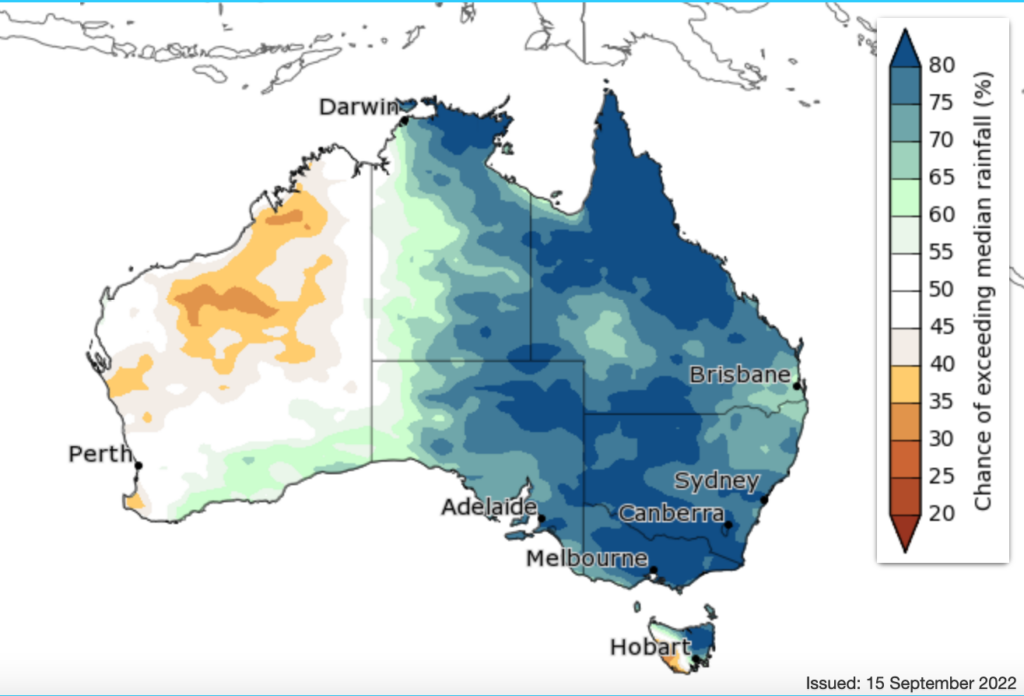With spring here, canola crops are flowering and podding, so they’re no longer vulnerable to pesky slugs (unlike some crops being established at the moment!)
But now is not the time to forget about slug control.
Effective management of slugs requires foresight, and spring monitoring is a must.
A problem year for slugs
Slugs are typically a pest in high-rainfall zones where annual rainfall exceeds 500 mm. It’s not unusual for growers in these regions to bait before and during establishment to protect young crops.
However according to Dr Michael Nash, 2022 has seen slug problems in typical areas such as southwest Victoria and Tasmania, as well as in regions that don’t traditionally suffer from slug damage, like southern NSW and northeast Victoria.
Dr Nash attributes these issues to weather patterns associated with La Niña (e.g. above average rainfall), creating favourable spring conditions for slug breeding in 2020 and 2021.
Another wet outlook for spring
The Bureau of Meteorology has declared a La Niña in 2022 for the third year in a row.
As a result, much of eastern Australia is expected to receive above average rainfall this spring, which is likely to create favourable conditions for slug breeding in the coming months.
This wet outlook for spring in 2022 is a contributing factor for a high-risk scenario for slugs in establishing crops in 2023.

Monitor this spring
As well as spring rainfall in the preceding year, another factor that determines slug risk is whether a paddock has a history of slugs.
Spring monitoring of slug populations can provide insights into risk of slugs damaging establishing seedlings in 2023.
Slugs can be monitored with refuges (e.g. carpet mat or tiles) placed out in paddock and checked in the morning. Refuges are most effective at detecting the presence of slugs when the soil is wet; when soil moisture probes indicate that the profile is full. Therefore, wet spring conditions provide a good opportunity for growers to use refuges to assess slug numbers and distribution in paddocks.
It’s important to use multiple transects of refuges to account for patchiness of slugs. Fifty monitoring refuges are recommended when paddock size is 40 hectares due to variability of Australian conditions.
Because slug numbers are dictated by spring conditions, spring monitoring allows you to understand likely threats the next season.
Keep in mind that if you do detect high numbers of slugs in your mature crops, baits are a protectant of young crops and springtime baiting for the intended purpose of slug control for the next season is not recommended for two reasons, (1) it’s not supported by current research and (2) the long withholding periods of baits.
New slug resources available
Best practice management of slugs requires an integrated approach. Rainfall estimates and spring monitoring provide key information to assess risk for 2023 and helps to make informed management choices.
For more information on how to use an integrated approach to tackle slugs in broadacre crops, new resources are available from the GRDC outlining, including information on slug species, understanding slug risk, and information on monitoring and control:
Slug Control Fact Sheet: Successful crop protection from slugs
Slugs in Crop: The Back Pocket Guide
Acknowledgments
Thanks to Dr Michael Nash for reviewing this article.
For more information:
Slugs – what can we learn from 2022
Slug control across southern Australia
Cover image: Photo by Andrew Weeks, Cesar Australia





